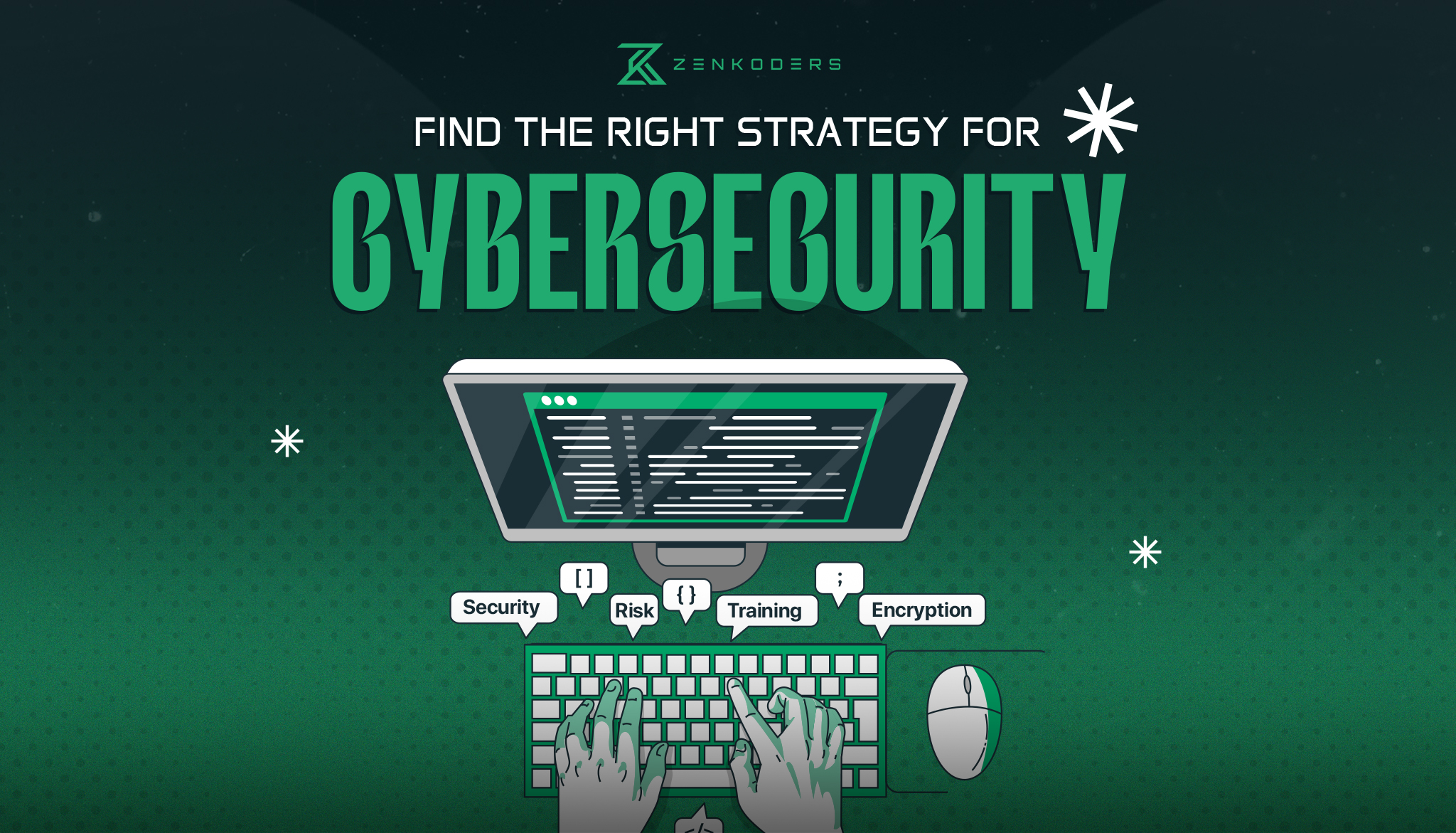Introduction
Technology is part of our everyday lives. Though it brings a lot of convenience, at the same time, new cyber threats and risks are on the rise that can cause great damage to our digital presence. Having the right cybersecurity strategy makes sure that your information remains confidential online. Innovations in cloud computing, artificial intelligence, and mobile app services while transformative, also introduce new vulnerabilities. As these technologies gain popularity the chance of cyberattacks also grows.
People often make the mistake of creating a strategy once, because cyber threats are always changing it is important to have a strategy that can adapt to change and is not vulnerable to new threats. Cyber strategies are not something you set up once and then completely forget about it. It needs frequent audits to safeguard your privacy.
If we take these risks head-on, companies will be able to nip problems in the bud. This approach not only safeguards their reputation but also protects their employees, customers, and stakeholders from potential harm.
Develop an App Using the Latest Trends in the Software Industry
How You Can Build a CyberSecurity Strategy? (Important Factors)
So the question here is what factors are really needed to develop the right cybersecurity strategy for your business?
Step 1: Find Important Assets
At first, you need to identify your assets that are vulnerable to threats and need protection from them. Which type of threats are most likely to cause you damage? Ransomware, Malware, or something else? Are there any recent incidents that your competitor faced?
This information is what enables an organization to prioritize its security efforts and allocate resources accordingly. By determining these threats, it would be easier to predict what strategy you can develop to secure assets like sensitive data, key business systems, and customer information. Getting a read on what threats can potentially hurt you in the future is how you create an effective strategy.
Step 2: Assessing Present Security Status
After identifying the vulnerable assets, you need to assess your current security status. International Standardization Organization (ISO) provides standards for information security systems among them ISO 27001 and ISO 27002 are the two most commonly used frameworks that you can use to check the maturity level of your cybersecurity. You need to assess everything from existing policies and procedures to the technologies of your organization. A thorough evaluation provides a clear picture of what needs improvement and where gaps exist. Finalize where you are standing currently and what needs to be improved. Your plan should include where your company will stand in terms of security measures in the next 3-5 years.
Step 3: Recognizing Potential Threats and Setting Clear Objectives
Once you know where you stand currently, you then now need to recognize the potential threats for the future. What type of cyber attack may affect your organization’s assets, it could be anything from ransomware, a phishing attack, or an insider attack. Recognizing these threats allows for the development of targeted defenses and proactive measures to tackle risks.
In addition, set clear objectives and determine how you can improve your organization’s security to tackle these attacks. This process needs extra consideration, explore different options and see what suits you best. Be specific and relevant to your objective, and see what is achievable. Everything that you finalize will require resources, money and time so be very clear while setting objectives.
Step 4: Aligning Cybersecurity with Business Goals
Cybersecurity should help your business succeed, not hold it back. When your security measures are aligned with your business goals, they can help you grow. It builds-up customer trust and ensure them you care about their privacy. One more thing is that you should document everything and be transparent while taking measures.
Core Components of a Cybersecurity Strategy

Risk Management
First things first, you need to understand and address the threats that put your organization at risk. Risk management includes assessing what’s and how’s of threats. What could go wrong? How severe the impact could be?
You need to examine all parts of your organization, and find areas that are vulnerable. Determine the potential of each risk. Then set your plan accordingly by focusing on and addressing the most potential threats first. Use measures in order to minimize or eliminate such risks. This can be achieved through anything from installing the latest software to educating the employees and implementing new policies and procedures. Regularly review and update your risk management plan to address new threats.
Incident Response Planning
Even with the best risk management, incidents can still occur. So to avoid that mistake you need to develop a cybersecurity prevention plan that tackles those identified risks. An incident response plan is a document that gives cybersecurity professionals instructions on how to respond to threats. These threats include data breaches, data leaks, and some other common cyber attacks. According to ISO, the five most common phases of IRP are detection, containment, investigation, remediation, and recovery.
Access Control and Identity Management
As part of your security architecture, identity management, and access control is the process of controlling who has access to what within an organization to prevent unauthorized access to sensitive data and systems. Controlling access to your system and data is important. Limit access according to the role and responsibility reduces the risk of unintentional breaches. Along with access control, always keep an eye on who is accessing the system to identify unusual activity timely. Regularly monitoring access levels keeps you up to date on employee changes of roles and removes access from individuals who have left the organization.
Regular Audits
Regular audits include conducting an in-depth review of your company’s IT infrastructure. Conducting security audits makes sure your security policy, procedure, and technologies are up to date and working according to the required security measures. The goal of the audit is to identify vulnerabilities in your system that could put the organization at risk.
Hire a third-party expert who simulates the cyber-attacks based on their knowledge to find and fix vulnerabilities. Based on the findings from your audits and assessments, update your security measures to address any gaps. After a careful assessment, your company will have a complete picture of its systems and know the best approach to handling weaknesses.
Staying Informed About Emerging Threats
Lastly, as we have discussed there are new cyber threats every day. Therefore, you should always stay informed about the latest information on cyber threats, and stay prepared to tackle any threat that can put your company’s image at risk. Update your security policies constantly, depending on fresh data about new attacks. Highlighting these key components will help you create a solid cybersecurity plan that guards your company against all possible threats while maintaining data integrity.
Human Factor in Cybersecurity
When developing your cybersecurity strategy you must first increase people’s awareness of hacking risks within the company. It’s a well-known fact that people are the weakest link in any security system. But with proper training and a security-conscious culture, they can be part of your security strategy.
Security Awareness Training
An organization should conduct security awareness training programs to teach employees about possible vulnerabilities. These programs will help them spot and avoid threats. It is important to keep in mind that more than 40% of cyber attacks occur due to human errors. By making security awareness training a regular part of the workplace routine, organizations can reduce the possibility of successful attacks. These preventions highlight the importance of cybersecurity across all levels of the organization.
Not only an organization should conduct security awareness training but should also create a conscious culture where everyone plays their part in safeguarding personal and organisation privacy.
Emerging Trends in Cybersecurity 2024
Artificial Intelligence and Machine Learning in Cybersecurity
By using AI and ML now you can detect and respond to threats faster than ever before. They assist you in analyzing vast amounts of data and identifying unusual patterns to predict risks. But at the same time, attackers can also use them to automate attacks. AI and ML are expected to play an important role in cyber threats as they advance.
Zero Trust Architecture
Zero Trust Architecture is a security model that requires strict verification for everyone trying to access resources. It supposes an attacker may be present within the organization network, and every user must be individually verified. It minimizes the risk of breaches by never trusting any user by default.
Blockchain for Security
Blockchain technology makes things safer by making a decentralized record of every transaction. This helps prevent data breaches and fraud. Here every transaction is verified and recorded in a way that is nearly impossible to change.
Grow Your Business with Our Expert Mobile App Development
Conclusion
Here at Zenkoders, a leading mobile app development company in USA , we take strong security measures to protect our data. We conduct awareness campaigns and have built a security-conscious environment within our organization.
You should make sure your security efforts are in line with your business goals, you have full access control, and you verify your security measures regularly. By focusing on key areas to manage risk, you can protect your data and keep your business running smoothly.


